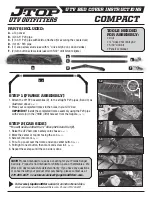
SERVICING AND MAINTENANCE
181
Cooling System
Coolant Checks
Check engine coolant (antifreeze) protection
every 12 months (before the onset of freezing
weather, where applicable). If the engine
coolant (antifreeze) is dirty or rusty in appear
-
ance, the system should be drained, flushed
and refilled with fresh engine coolant (anti
-
freeze). Check the front of the A/C condenser
for any accumulation of bugs, leaves, etc. If
dirty, clean by gently spraying water from a
garden hose vertically down the face of the
condenser.
Cooling System — Drain, Flush And Refill
NOTE:
Some vehicles require special tools to add
coolant properly. Failure to fill these systems
properly could lead to severe internal engine
damage. If any coolant is needed to be added to
the system please contact an authorized dealer.
If the engine coolant (antifreeze) is dirty or
contains visible sediment, have an authorized
dealer clean and flush with OAT coolant (anti
-
freeze) (conforming to MS.90032).
Refer to the “Maintenance Plan” in this section
for the proper maintenance intervals.
Selection Of Coolant
Refer to “Fluids And Lubricants” in “Technical
Specifications” for further information.
NOTE:
Mixing of engine coolant (antifreeze) other than
specified Organic Additive Technology (OAT)
engine coolant (antifreeze), may result in
engine damage and may decrease corrosion
protection. Organic Additive Technology (OAT)
engine coolant is different and should not be
mixed with Hybrid Organic Additive Technology
(HOAT) engine coolant (antifreeze) or any “glob
-
ally compatible” coolant (antifreeze). If a
non-OAT engine coolant (antifreeze) is intro
-
duced into the cooling system in an emergency,
the cooling system will need to be drained,
flushed, and refilled with fresh OAT coolant
(conforming to MS.90032), by an authorized
dealer as soon as possible.
Do not use water alone or alcohol-based
engine coolant (antifreeze) products. Do not
use additional rust inhibitors or antirust prod
-
ucts, as they may not be compatible with the
radiator engine coolant and may plug the radi
-
ator.
This vehicle has not been designed for use with
propylene glycol-based engine coolant (anti
-
freeze). Use of propylene glycolbased engine
coolant (antifreeze) is not recommended.
WARNING!
You or others can be badly burned by hot
engine coolant (antifreeze) or steam from
your radiator. If you see or hear steam
coming from under the hood, do not open the
hood until the radiator has had time to cool.
Never open a cooling system pressure cap
when the radiator or coolant bottle is hot.
Keep hands, tools, clothing, and jewelry away
from the radiator cooling fan when the hood
is raised. The fan starts automatically and
may start at any time, whether the engine is
running or not.
When working near the radiator cooling fan,
disconnect the fan motor lead or turn the igni
-
tion to the OFF mode. The fan is temperature
controlled and can start at any time the igni
-
tion is in the ON mode.
7
20_BG_OM_EN_US_t.book Page 181
Summary of Contents for 500L 2020
Page 151: ...IN CASE OF EMERGENCY 149 Fuse Panel Cavity Locations 6 20_BG_OM_EN_US_t book Page 149...
Page 193: ...SERVICING AND MAINTENANCE 191 7 20_BG_OM_EN_US_t book Page 191...
Page 281: ......
Page 282: ......
















































